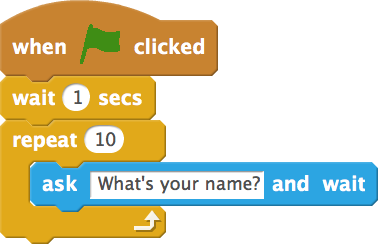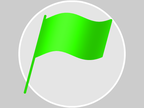 What is Scratch?
What is Scratch?
Scratch is a block-driven computer prgramming language that was made to establish a foundation for the works behind other programming language. Instead of having to remember all of the code tags in order to get the program to work, Scratch provides simple, straight-forward tools for everyone to understand and learn the concepts behind programming. The beginning of Scratch starts with the "When ____ is clicked/activated" block. The rest of the work on Scratch follows by using the rest of the blocks available on the site.
>Sprites - Sprites are the characters that often appear on the screen that respond to the actions of the programmer. Unlike when programming a website, sprites can be used to interact with the user, such as when the user clicks on the sprite or presses the space key.
>Motion Blocks - Motion blocks control the movement of the sprites whether they rely on moving to the right quadrant of the screen or facing a certain direction based on degrees. It helps to add depth to the work, allowing for the movement of however the creator wishes each individual sprite to act out his play.
>Looks Blocks - The Looks blocks work to change the appearance of the sprites on the page. While the costumes tab on the the top of the menu bar allows for sprites to change looks manually, the Looks block can have the sprite change costumes during a program. It also allows for speech or some type of dialogue in the program with the Say or Think blocks.
>Control Blocks - The Control blocks have the ability to change the motion of the sprite for a duration of time. Soem of them force the sprite to wait for a period of time before the next action occurs and other can keep the same action(s) going on for the specified loop of time.
>Events Blocks - The Events blocks are arguably the most important pieces in Scratch. The first idea that most users will start with is the green flag. These blocks will often simulate the start of the program. The Broadcast block is especially useful because it allows for cleaner organization with longer scenes as each sprite will react differently when they recieve the broadcasted message. This can lead to sprites acting accordingly to disappear or change position. The Events blocks work to make sure that the sprites begin or end their reaction when the specified event happens.
These blocks will often simulate the start of the program. The Broadcast block is especially useful because it allows for cleaner organization with longer scenes as each sprite will react differently when they recieve the broadcasted message. This can lead to sprites acting accordingly to disappear or change position. The Events blocks work to make sure that the sprites begin or end their reaction when the specified event happens.
>Sprites - Sprites are the characters that often appear on the screen that respond to the actions of the programmer. Unlike when programming a website, sprites can be used to interact with the user, such as when the user clicks on the sprite or presses the space key.
>Motion Blocks - Motion blocks control the movement of the sprites whether they rely on moving to the right quadrant of the screen or facing a certain direction based on degrees. It helps to add depth to the work, allowing for the movement of however the creator wishes each individual sprite to act out his play.
>Looks Blocks - The Looks blocks work to change the appearance of the sprites on the page. While the costumes tab on the the top of the menu bar allows for sprites to change looks manually, the Looks block can have the sprite change costumes during a program. It also allows for speech or some type of dialogue in the program with the Say or Think blocks.
>Control Blocks - The Control blocks have the ability to change the motion of the sprite for a duration of time. Soem of them force the sprite to wait for a period of time before the next action occurs and other can keep the same action(s) going on for the specified loop of time.
>Events Blocks - The Events blocks are arguably the most important pieces in Scratch. The first idea that most users will start with is the green flag.
 These blocks will often simulate the start of the program. The Broadcast block is especially useful because it allows for cleaner organization with longer scenes as each sprite will react differently when they recieve the broadcasted message. This can lead to sprites acting accordingly to disappear or change position. The Events blocks work to make sure that the sprites begin or end their reaction when the specified event happens.
These blocks will often simulate the start of the program. The Broadcast block is especially useful because it allows for cleaner organization with longer scenes as each sprite will react differently when they recieve the broadcasted message. This can lead to sprites acting accordingly to disappear or change position. The Events blocks work to make sure that the sprites begin or end their reaction when the specified event happens.